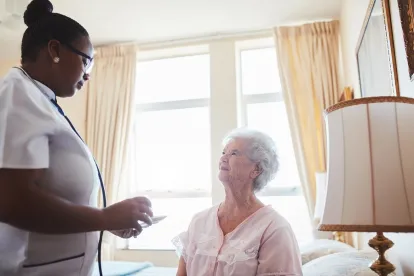A recent study found significant understaffing in 75% of nursing facilities across the country, raising concerns about the level of care patients receive.
The Harvard and Vanderbilt study, published in the July issue of the Journal of Health Affairs, used data from the Payroll Based Journal (PBJ) to analyze the staffing levels of more than 15,000 facilities. The study examined the staffing levels of registered nurses (RN), licensed practical nurses (LPN), and nurse aides, relative to the number of nursing home residents who rely on their care.
Understaffing is an ongoing issue for nursing facilities. Numerous reports highlight that nursing facilities often inflate the staffing numbers they report to the government, facilitating this study to dive into payroll records. Because facilities are required to submit payroll information and other auditable data, the numbers in this study more accurately depict the current staffing situation.
The Centers for Medicare and Medicaid Services (CMS) is responsible for quality control in facilities caring for Medicare and Medicaid beneficiaries. As part of the CMS requirements, nearly every facility is required to have at least one RN on site for eight hours, every day. Yet, the study found that three-fourths of nursing homes rarely complied with CMS staffing requirements.
The study also found a peculiar trend of higher staffing levels in the weeks directly before and after the facilities anticipate CMS’ annual survey, especially in those of RNs. It also showed large fluctuations in staffing between weekdays and weekends.
Overwhelming a facility’s nursing staff with too many patients or residents can certainly diminish the level of care rendered to those admitted. Some of the clients I represent are dropped while being taken to the bathroom by one person, when two staff members were required by doctors’ orders. Sometimes they fall while attempting to go to the bathroom on their own, because there is no one to answer their call bells. Other clients develop painful infected pressure sores because the facilities they were in did not have adequate staff to relieve pressure as frequently as needed.
All too often, understaffing is the source of the neglect and mistakes nursing home residents suffer from. For the families and friends of nursing home residents, the results from this study are understandably worrisome. Without enough nurses to attend to patients who rely on them for medical assistance and basic needs such as food, bathing and movement, it can be nearly impossible to deliver sufficient care.
It stands to reason that these staffing issues are the result of the facilities’ financial stakeholders cutting costs to increase their profits. Perhaps this is why non-profit nursing facilities generally provide better care to their residents than their for-profit counterparts. It is clear increased requirements and reforms are needed to ensure adequate patient safety.
The neglect of patients that result in death, ulcers, fractures, and other physical and emotional harms are actionable claims. It’s important that families of nursing home residents keep a close eye on their loved ones and seek legal counsel if they see signs of neglect.



 />i
/>i

